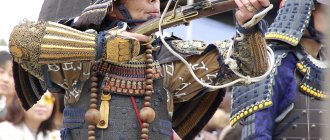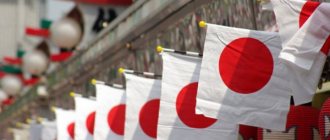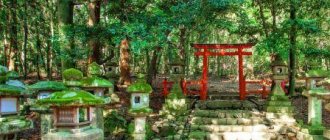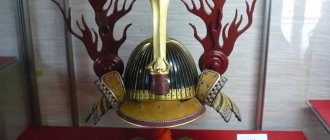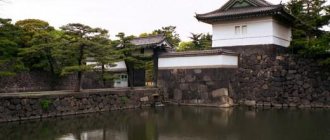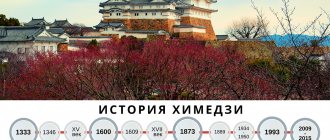Of all the states of the Far East, it is Japan that has always aroused the greatest interest among adventurers and historians around the world. For a long time, this state was just a myth that people retold to each other. However, when the discovery of Japan took place, the fairy tale turned into reality. It should be noted that the history of this country is rich and interesting. Japan occupies a significant place in the world because it is the source of a completely unique culture. In addition, this state is quite strong, politically and economically. This characteristic has been formed over several centuries. Moreover, we can safely say that the strong features of the Japanese state were forged in the heat of numerous battles. However, Japan was not always so powerful. History knows the moment when the land of the rising sun was completely closed from the outside world. This period lasted several centuries, but it was brought to an end, which led to the economic evolution of Japan and the enlightenment of its nation.
Sakoku isolation policy
Foreign policy relations, implying the complete isolation of Japan, lasted from 1641 to 1853 and received the general name “sakoku”. This type of political system of the state implied strict regulations on the part of the state authorities of any kind of relations between the Japanese side and the foreign side. Shogun Ieyasu Tokugawa is rightfully considered the founder of the sakoku policy. Its introduction was due to the political and economic situation of Japan in the 16th century. Today, historians identify several main reasons that led to Japan’s self-isolation, namely:
- In the 16th century, a large number of Europeans began to arrive in Japan due to the development of trade relations. But they bring with them not only goods, but also culture.
- Christianity begins to gradually penetrate into the territory of the eastern state. This will soon lead to the gradual collapse of feudalism, because many feudal lords will begin to accept the Christian faith to gain support from Europeans in the struggle for power.
- In 1637, the Simbari uprising of Catholic peasants took place.
All these facts led to the decision to self-isolate, which lasted until Japan in the 19th century.
Kofun period
By the end of the 3rd century AD, the unification of small states into a kind of federal entity under the rule of the emperor, who lived with his court in the capital, was practically completed. Each new emperor moved to a new capital, since custom did not allow him to live in the place where the grave of his predecessor remained. It was only in 710 that the permanent capital of the state, the city of Heijō-kyō (modern Nara), was founded, and just 9 years earlier the first legislative code was drawn up, which was formally in force until the adoption of the Constitution in 1889.
Around the middle of the 6th century, the spread of Buddhism began. Despite the opposition of Shinto priests, which led to conflicts and several wars, over time the teaching gained popularity among the upper echelons of aristocratic society and became the state religion. However, the lower strata of society continued to practice Shintoism.
In 645, the aristocratic Fujiwara clan came to power, concentrating actual power in their hands, while the emperor remained only in the role of high priest.
Discovery of Japan
As stated earlier, Japan opened to foreign trade in 1854. The main “culprit” of this event was the United States. Under the command of Commander Matthew Perry, 7 ships arrived on the shores of Japan in the previous year. Some of them were steam powered to exert a psychological influence on the Japanese, who were not yet familiar with the achievements of modern technology. In essence, it was a forced opening of Japan, because the United States, by that time already had its own reasons for wanting a speedy exit from the isolation of the Far Eastern state. These reasons include the following:
- Japanese ports were to be used as "coal depots". That is, American ships could replenish their supplies, in other words, refuel.
- In addition, the American side wanted to protect sailors sailing through Japanese territory from attacks by its inhabitants.
- The third and one of the main reasons, according to many historians, was the desire of the United States to expand its trade relations in the world.
The consequences of the discovery of Japan were simply colossal. Firstly, Western culture began to penetrate the territory of the Far Eastern state. Secondly, Japan has significantly expanded its political and economic ties. Western goods began to arrive in the country, and, in turn, the entire world around them learned about the existence of a small but extremely interesting state. In 1854, on March 3, the Treaty of Kanagawa was signed, which completely opened the state to foreign trade, namely to the United States.
This historical event marked the beginning of a new era both for the Japanese state and for the whole world. However, historically, these events are nothing more than the second discovery of Japan. The first took place in 1600 by the navigator William Adams, who was a member of an expedition to the Far East. It significantly influenced the development of Japan’s economic relations with Western countries, which subsequently led to self-isolation, which has already been described in the article.
“Opening” of the country and concluding unequal treaties
40s of the XIX century. were marked by England's active struggle to seize colonial positions in China. For the United States, the Far East was also of significant interest as a huge potential market, of which Japan and China were components.
In 1845, Congress gave the US President authority to establish trade relations with Japan. After several unsuccessful attempts to start negotiations with the Japanese, a military expedition to Japan was launched. On July 8, 1853, Commodore Perry’s squadron entered Uraga Bay south of the capital, and the ships menacingly pointed their guns at the shore. Perry refused to move the negotiations to Nagasaki and gave the shogun a letter from the president, as well as models of the latest American-made cars.
Lacquer box with mother-of-pearl inlay
The apparent military display was coupled with a promise to wait until the spring of 1854 for a response, when American ships returned to Japan after visiting Chinese ports. The appearance of the “black squadron” (steam ships left a trail of black smoke as they moved) caused terrible panic in cities and villages. The shogunate, breaking with its own established tradition, asked the imperial house for advice on the current situation. At a loss, the government even turned to the Dutch for advice and a request for help in organizing the defense of Edo. However, bakufu officials understood that in such circumstances it was difficult to count on success in organizing an armed response, even with the use of Dutch weapons. It was decided, under the cover of lengthy negotiations with the Americans, to avoid a concrete response to the US demand to open the country. However, the arrival of Commodore Perry in February 1854 at Uraga Bay completely changed the situation. Nine warships equipped with 250 guns, a crew of 1,800 men, Perry's demands, accompanied by threats to call the entire American fleet to Edo, and finally the landing of 500 sailors ashore during the negotiations showed the shogunate both the possibility of military intervention and the seriousness of the plans of an overseas power. in relation to Japan.
On March 31, 1854, the first Japanese-American treaty was signed in Kanagawa (Yokohama). American ships received the right to enter the ports of Shimoda (Izu Peninsula) and Hakodate, where they could purchase food, water, coal and other goods through money or in exchange for goods through shogun officials. The treaty signed at Kanagawa was not a trade agreement, and the Americans insisted on concluding another one along the lines of the US-China treaty of 1844. On October 14, 1854, the Anglo-Japanese treaty was signed, repeating the main provisions of the Kanagawa Treaty.
Almost simultaneously with Perry’s squadron, on August 21, 1853, a Russian mission led by Vice Admiral Putyatin arrived in Nagasaki. She had a directive to only peacefully achieve the establishment of trade relations, as well as recognition of Sakhalin, which was part of the Amur region, and the Kuril Islands as Russian possessions. The negotiations, which the shogunal government delayed in every possible way, did not lead to the conclusion of an agreement. Putyatin also failed to reach an agreement with Perry - he avoided contacts, clearly trying to be the first to conclude an agreement with Japan and receive maximum privileges. The outbreak of the Russian-Turkish war and the emerging threat of an attack by the Anglo-French squadron on Petropavlovsk and Russian Primorye forced Putyatin to leave Nagasaki and sail north.
The treaty between Russia and Japan was signed on February 7, 1855 in Shimoda. The border was drawn between the islands of Urup and Iturup, but the issue of Sakhalin remained unresolved, the island remained in the joint possession of both countries.
According to the agreements signed with England and Russia, the port of Nagasaki was opened for ships from these countries.
The USA and England were not satisfied with the agreements concluded with Japan. The treaties imposed on China were built on the basis of a regime of inequality - they wanted to use this principle in treaty relations with Japan. However, the first country to supplement the terms of the agreements concluded by Japan with Western countries in order to obtain new privileges was Holland.
Signed in 1856-1857. two Dutch-Japanese treaties formalized the establishment of consular jurisdiction for the Dutch, the introduction of customs duties in the amount of 35% of the value of goods, the opening of the port of Nagasaki for trade, etc. But the American-Japanese treaty of 1858 became the model for all subsequent agreements with Western countries. , unequal and humiliating for Japan. It was concluded after almost two years of negotiations conducted in Shimoda by the first US Consul General Harris. The treaty provided for freedom of trade, established consular jurisdiction and the right of permanent residence of Americans based on the creation of special extraterritorial settlements (settlements) for foreigners in ports and cities open or to be opened in the coming years [Hakodate, Shimoda, Kanagawa (Yokohama), Nagasaki, Niigata, Hyogo (Kobe), Osaka, Edo]. The scale of customs duties had a minimum level of 5% and a maximum of 35%, depending on the product. But the main thing was that Japan, having signed this agreement, lost the right of customs autonomy and could not protest against the reduced import tariff. This treaty of “friendship and trade” assumed US mediation in Japan’s conflict situation with any Western power; it included an article on Japan’s right to purchase American weapons and invite military specialists from the United States.
On August 7, 1858, an agreement on trade and navigation between Russia and Japan was signed in Edo, which was in force until 1895. The trade agreement provided the Russians with the right of extraterritoriality, most favored nation and other privileges. However, the Russo-Japanese treaty did not have articles on mediation and on the provision of ships and weapons to Japan, which emphasized the long-standing Russian position of neutrality and non-interference in the internal affairs of its neighbor.
Tsarist Russia, which aspired to the Far Eastern markets and received the same privileges as other countries, actually did not take advantage of them due to its economic backwardness, the rivalry of the USA, England and France, as well as the stubborn position of Japan, which did not want to recognize Russia’s historical rights to the Kuril Islands. islands and South Sakhalin.
A whole series of so-called Ansei treaties ( From the name of the Ansei period (1854-1859)
), concluded by Japan with Western countries in 1854 -1858. (Japanese-American - March 31, 1854, July 29, 1858; Dutch-Japanese - January 30, 1856, 1858; Anglo-Japanese - October 14, 1854; August 26, 1858; Franco-Japanese - October 9, 1858; Russian-Japanese - February 7, 1855, August 19, 1858), ended the long-term isolation of the country and at the same time became the threshold of a new period - its transformation into a dependent state.
The signing of the Japanese-American Treaty of 1858 led to increased political unrest in the country and a split in the ruling group. If in the first years after the opening of the country (1854-1859), forces opposing the government were just forming and covered mainly various (from daimyo to serving samurai) layers of the ruling class, then the conclusion of the agreement became the impetus for expanding the social base and intensifying the entire movement.
Nara and Heinan period
The period begins with the construction of the capital Heijo on the territory of the modern city of Nara. At this time, more than 60 provinces were subordinate to the capital, each of which was headed by its own governor appointed from the center. According to a set of laws adopted several years earlier, the land and the population living on it were considered the property of the state. During the Nara period, which lasted about 80 years, the influence of Buddhism increased greatly. The largest churches and monasteries were built in the capital. One Buddhist monk from a seedy provincial family managed to subjugate the then-living Empress Koken, who received the name Shotoku upon her re-entry to the throne, to such an extent that he even desired to become emperor. However, the death of the empress interfered with his plans, and in order to avoid the influence of Buddhists on members of the imperial family, the capital was moved to the city of Heian. Not a single Buddhist temple was built in the new capital.
During the Heian period that followed, actual power was concentrated in the hands of the Fujiwara clan. Over the course of several centuries, girls from this clan married members of the imperial dynasty, increasingly strengthening family ties. This led to the fact that key positions were often occupied by people incapable of government activities.
At the end of the 9th century, Japan ceased official relations with China, which had been quite limited until that time. If until this moment China was considered a kind of standard, then in subsequent centuries, thanks to the absence of Chinese influence, Japan developed a unique and isolated culture, reworking all previous borrowings in its own way.
Emperor Gosanjo, who ascended the throne in the middle of the 11th century, had no family ties with the Fujiwara family and wanted to rule the country on his own. Having abdicated the throne in 1086 in favor of his minor son, he effectively ruled the state from the monastery. Subsequent rulers did the same, and until 1156 the country was ruled by monastic emperors.
Kamakura period
Starting from the 12th century, provincial military clans began to have an increasing influence on the political life of the state. The main rivalry is between the Taira and Minamoto clans. The more successful Taira, who established ties with the imperial dynasty, aroused the discontent and envy of their rivals, which led to a protracted war in which the latter were victorious. The representative of the Minamoto clan, Yoritomo, who consistently eliminated all competitors, receives from the emperor the position of seiyi taishogun and de facto dual power is established in Japan for many centuries. The administration of external rituals remains with the imperial house, and all real power belongs to the military rulers, the shoguns. A new government (shogunate) was founded in Yoritomo's hometown of Kamakura.
In 1274, the Mongols, having conquered China, set out to conquer Japan. The 30,000-strong fleet, having previously plundered the islands of Iki and Tsushima, heads to Hakata Bay. The Japanese troops, inferior to the Mongols both in numbers and in weapons, were doomed to defeat, but the typhoon that struck scattered the enemy fleet, and it did not come to a direct collision. A second attempt by the Mongols in 1281 ended with the same result - a storm buried most of the Mongol ships. It was then, apparently, that the concept of “kamikaze” was born, which literally translates as “divine wind” that destroys enemies.
Revival of the idea of Imperial power
To calm down their subjects, the authorities decided to instill an idea that would justify the hardships they endured, discipline them, and prepare them for achievements in the name of their goals. This idea became filial devotion to the emperor. The long-forgotten emperor was turning into a national patriotic symbol. An ideology was born based on devotion to the emperor, whose power was sanctified by divine origin.
This idea became the basis for the official cult introduced by the government, called State Shinto. He gives a person one right, which is also a duty - to be loyal to the emperor, and, if necessary, to die for him. Subsequently, this idea played an important role in the “Japanese economic miracle.”
Do you need proofreading or review of academic work? Ask a question to the teacher and get an answer in 15 minutes! Ask a Question
Azuchi-Momoyama period
It is called so because of the Azuchi and Momoyama castles, which were owned by Oda Nobunaga and Toyotomi Hideyoshi.
The troubled period of feudal fragmentation ended in 1573 with the expulsion of the last shogun Ashikaga from Kyoto for participating in a conspiracy against one of the future unifiers of Japan, Oda Nobunaga. Beginning in 1568, Oda systematically and consistently destroyed his enemies, fighting, among other things, with Buddhist schools, which completely controlled some provinces. After Nobunaga's death, the unification of the country was continued by his associate Toyotomi Hideyoshi, who subjugated the northern provinces, as well as the islands of Shikoku and Kyushu, to his power.
Hideyoshi confiscated weapons from monks and peasants, forced samurai to move to cities, and conducted an audit of state lands and a population census. A special decree expelled all Christian missionaries from the country, and to intimidate them, several dozen Catholic monks even had to be executed.
After the unification of the country, Hideyoshi began planning expansion to the mainland, dreaming of conquering China and Korea. However, his death marked the end of an unsuccessful military campaign on the Korean Peninsula, after which Japan abandoned attempts to invade other countries until the end of the 19th century.
Society
The social system of the shogunate was characterized by the absolute dominance of the samurai, who at their own discretion disposed of the lives of ordinary people. Peasants and urban commoners did not even have the right to have a surname. In the first half of the 19th century. The Tokugawa shogunate was in a state of decline. During this period, Japan's population growth stopped and the production of rice, which was the staple food, decreased. Lack of rice, speculation and sharp increases in rice prices repeatedly caused popular uprisings.
Arrival of Europeans
The era of great geographical discoveries began in the 15th century.
A hundred years later, Europeans entered East Asia. In 1543, their first ships reached the shores of the Japanese island of Tanegashima. They provided the islanders with firearms, which would soon be produced throughout Japan. In 1549, the Jesuit Francis Xavier arrived in the city of Kagoshima and introduced Christianity to local residents. Over the course of a century, the Japanese islands were visited by Spanish and Portuguese merchants, acting as intermediaries in trade with East Asia. They traded European and Chinese goods for Japanese silver. Since the Europeans came from the south, the Japanese called them “southern barbarians.” The samurai feudal lords in Western Japan were interested in such trade and happily accepted merchants and missionaries, sometimes even converting to Christianity. The first Christian feudal lord on the island of Kyushu, Omura Sumitada, granted the Society of Jesus the city of Nagasaki, which later became the Japanese “window to Europe.” With the support of local rulers, the Jesuits opened churches in Kyoto, Yamaguchi, Sakai and other cities. By the end of the 16th century, there were 300 thousand Christians in the country. The most influential ones went as ambassadors to the Pope in 1582, and were received with great honors in Europe.
Finished works on a similar topic
- Coursework Arrival of Europeans in Japan 460 rub.
- Abstract The Arrival of Europeans in Japan 280 RUR.
- Test paper Arrival of Europeans in Japan 210 rub.
Receive completed work or specialist advice on your educational project Find out the cost
